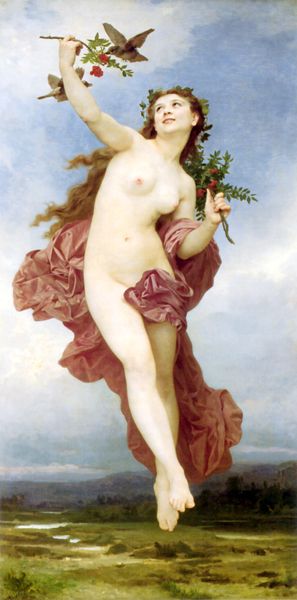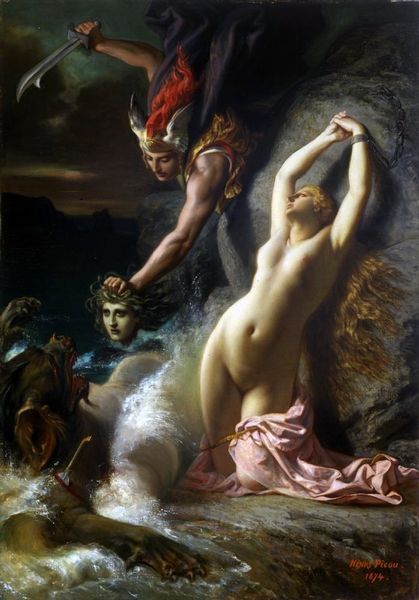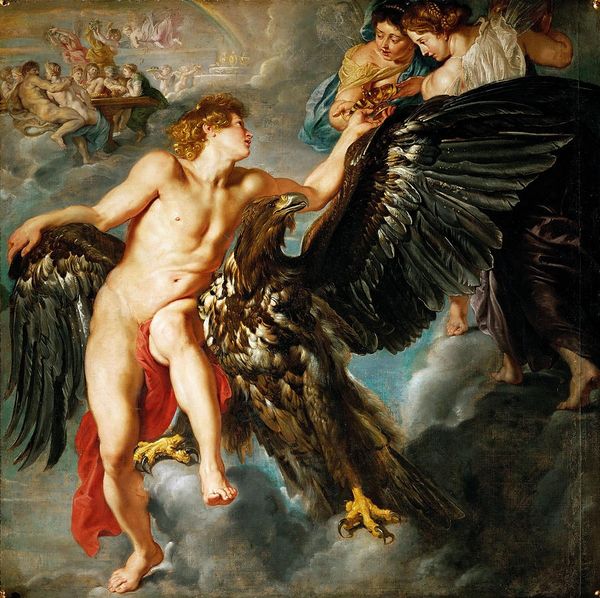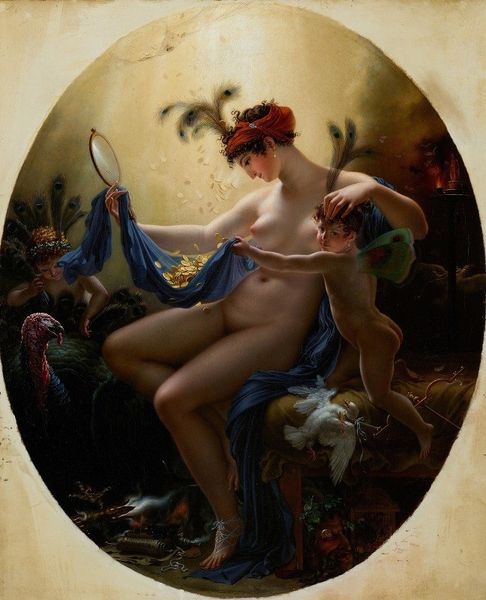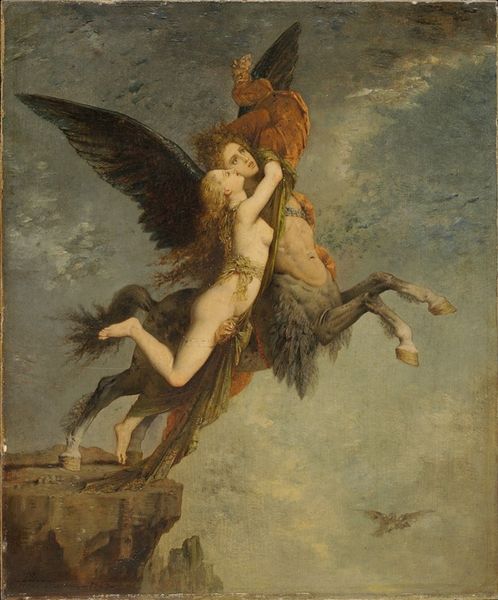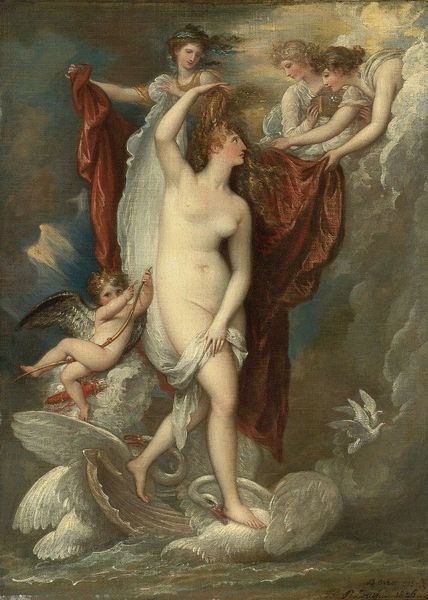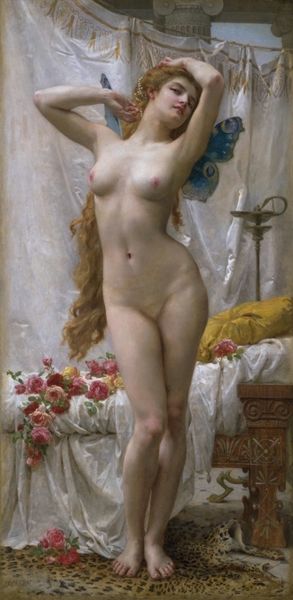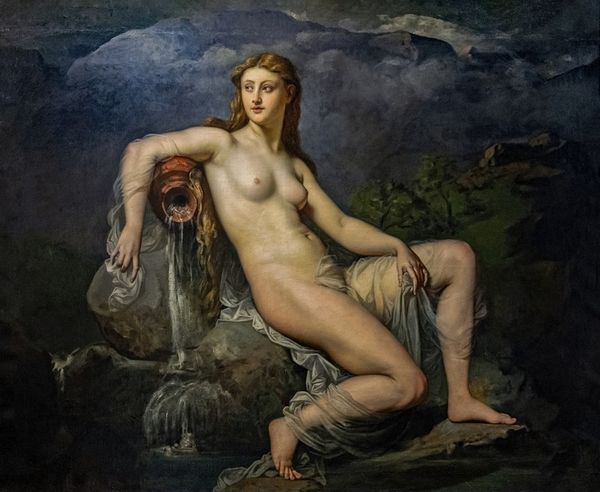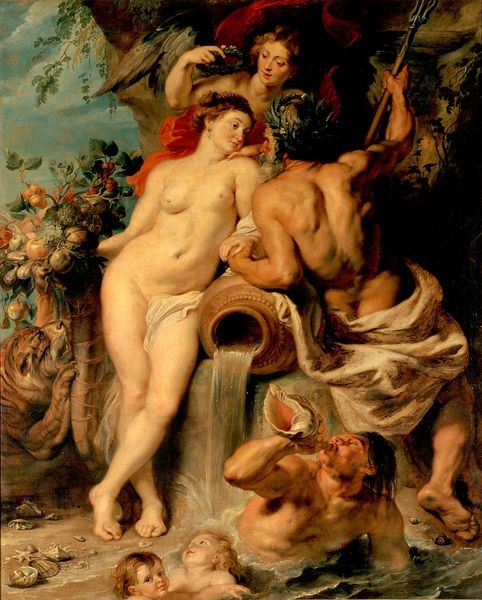
#
possibly oil pastel
#
oil painting
#
neo expressionist
#
acrylic on canvas
#
underpainting
#
animal portrait
#
animal drawing portrait
#
portrait art
#
fine art portrait
#
digital portrait
Dimensions: height 181 cm, width 128 cm, width 131 cm, thickness 5.3 cm, depth 15 cm
Copyright: Rijks Museum: Open Domain
Gustav-Adolphe Diez painted “Hebe with Jupiter in the Guise of an Eagle” in the early 19th century. The painting depicts Hebe, the Greek goddess of youth, and Jupiter, king of the gods, in the form of an eagle, and it reflects the enduring influence of classical mythology on European art and culture. Diez here relies on established visual codes and cultural references. The eagle is a symbol of power and divinity, associating Jupiter with imperial authority and the divine right of kings. The institution of the monarchy was very much at stake in the early 1800s. France had overthrown the monarchy and Germany was undergoing political transformation following the Napoleonic wars. Perhaps this painting is a conservative defense of that institution. Art historians turn to literary sources, political documents, and social histories to fully understand these works. By situating “Hebe with Jupiter in the Guise of an Eagle” within its specific historical context, we can better understand its cultural significance and enduring appeal.
Comments
No comments
Be the first to comment and join the conversation on the ultimate creative platform.
